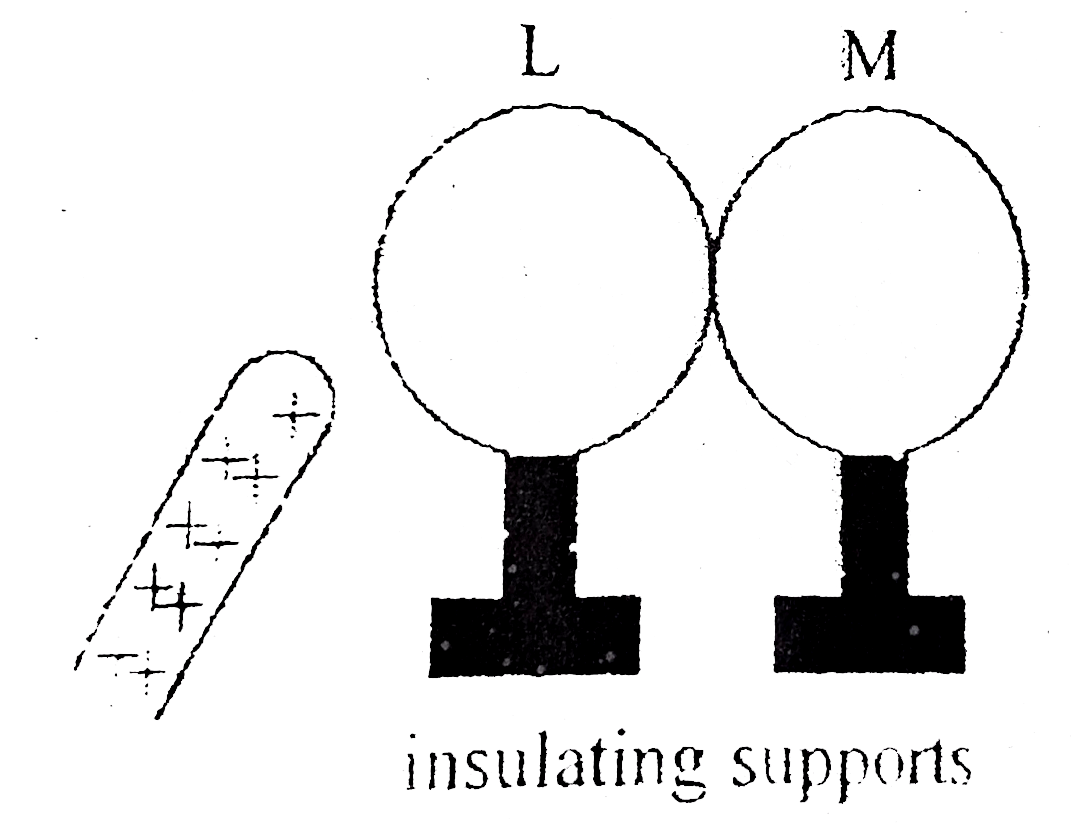Two identical conduction spheres, one having an initial charge +Q and the other initially uncharged, are brought into contact.
(a) What is the new charge on each sphere?
(b) While the spheres are in contact, a positively chaged rod is moved close to one sphere, causing a redistribution of hte charges on the two spheres so the charge on hte sphere closest to the rod has a charge-Q. What is the charge to the other sphere?
(a) This is due to the reason that the spheres are identical land they share the total charge equally.
(b) The charge on other sphere will be +Q. Because of induction the charge on other sphere will be +Q.
Topper's Solved these Questions
- COULOMB LAW AND ELECTRIC FIELDBOOK - CENGAGE PHYSICSCHAPTER - COULOMB LAW AND ELECTRIC FIELDEXERCISE - Subjective
32 Videos
- COULOMB LAW AND ELECTRIC FIELDBOOK - CENGAGE PHYSICSCHAPTER - COULOMB LAW AND ELECTRIC FIELDEXERCISE - Single Correct
47 Videos
- COULOMB LAW AND ELECTRIC FIELDBOOK - CENGAGE PHYSICSCHAPTER - COULOMB LAW AND ELECTRIC FIELDEXERCISE - Solved examples
10 Videos
- COMMUNICATION SYSTEMBOOK - CENGAGE PHYSICSCHAPTER - COMMUNICATION SYSTEMEXERCISE - QUESTION BANK
19 Videos
- Current ElectricityBOOK - CENGAGE PHYSICSCHAPTER - Current ElectricityEXERCISE - QUESTION BANK
40 Videos
Similar Questions
Knowledge Check
If two conducting spheres are separately charged and then brought in contact
Athe total energy of the two spheres is conservedBthe total charge on the spheres is conservedCboth the total energy and charge are conservedDthe final potential is always the mean of the original potential of the two spheresIf two conducting spheres are separately charged and then brought in contact.
AThe total energy of the two spheres is conservedBThe total charge on the two spheres is conservedCBoth the total energy and charge are conservedDThe final potential is always the mean of the original potentials of the two spheresTwo conducting spheres of unequal radii are given cahrge such that they have the same charge density. If they are now brought in contact,
Ano charge will be exchanged between temBcharge will flow the larger to the smaller sphereCcharge will flow from the smaller to the larger sphereDsome heat will be produced
Two identical sphres, one positively charged and the other negativily charged are held d cm apart.If the magnitude of the charges on the two spheres are equal , find the electric potential at a point midway on the line joining the centres of the two spheres.
View SolutionTwo uncharged metal spheres, L and M, are in contact A positively charged rod is brought close to L, but not touching it, as shown. The two spheres are slightly separated and the rod is then withdrawn. As a result:

View SolutionTwo spheres are separately charged and then brought in contact, so
View SolutionA positively charged rod is moved near conducting sphere as shown. What will be the movements of the electrons and protons in the conducting sphere?

View SolutionConsider a neutral conducting sphere. A positive point charge is placed outside the sphere. The net charge on the sphere is then
View Solution
